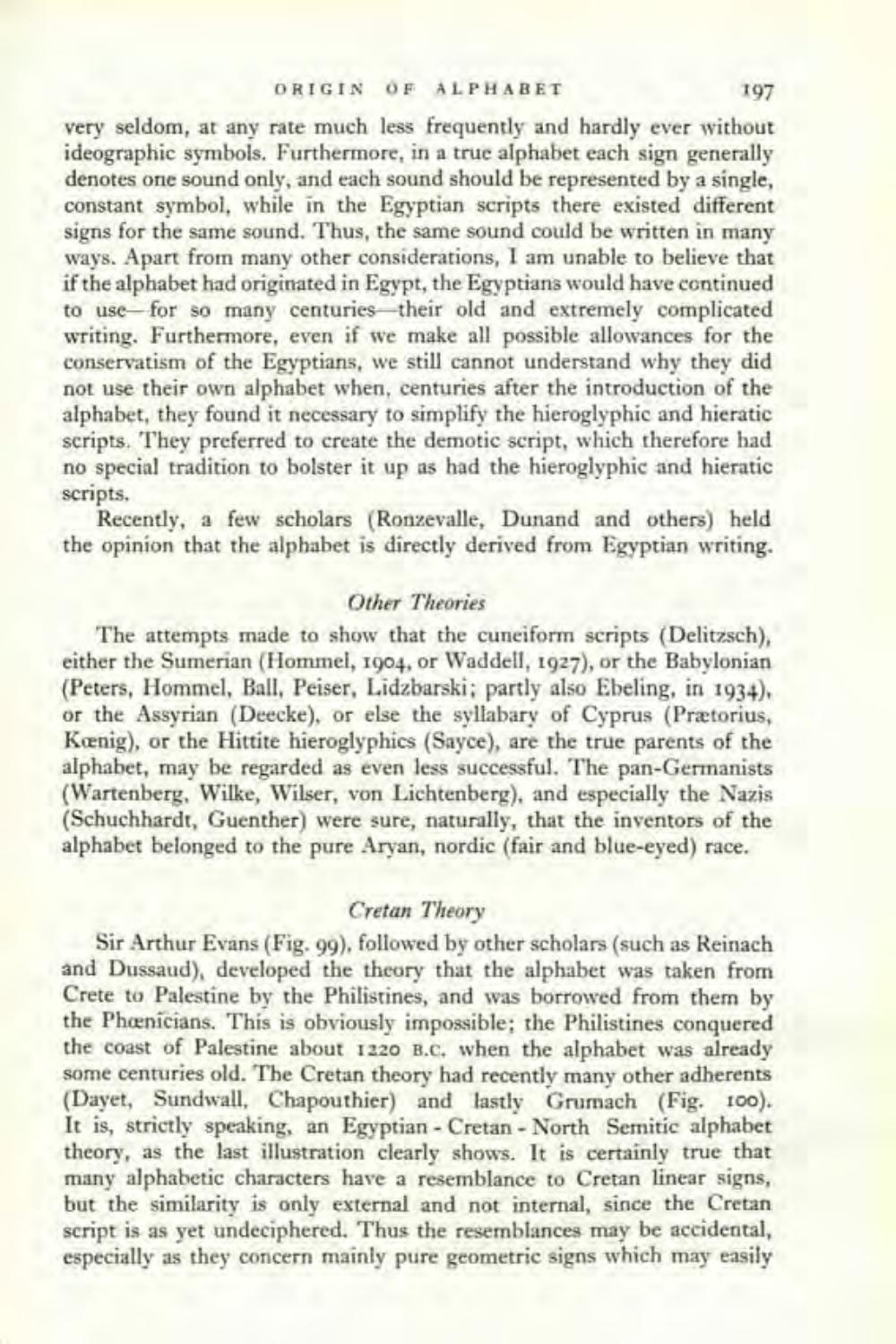________________
ORIGIN OF ALPHABET
197 very seldom, at any rate much less frequently and hardly ever without ideographic symbols. Furthermore, in a true alphabet each sign generally denotes one sound only, and each sound should be represented by a single, constant symbol, while in the Egyptian scripts there existed different signs for the same sound. Thus, the same sound could be written in many ways. Apart from many other considerations, I am unable to believe that if the alphabet had originated in Egypt, the Egyptians would have continued to use for so many centuries their old and extremely complicated writing. Furthermore, even if we make all possible allowances for the conservatism of the Egyptians, we still cannot understand why they did not use their own alphabet when, centuries after the introduction of the alphabet, they found it necessary to simplify the hieroglyphic and hieratic scripts. They preferred to create the demotic script, which therefore had no special tradition to bolster it up as had the hieroglyphic and hieratic scripts.
Recently, a few scholars (Ronzevalle, Dunand and others) held the opinion that the alphabet is directly derived from Egyptian writing.
Other Theories
The attempts made to show that the cuneiform scripts (Delitzsch), either the Sumerian (Hommel, 1904, or Waddell, 1927), or the Babylonian (Peters, Hommel, Ball, Peiser, Lidzbarski; partly also Ebeling, in 1934), or the Assyrian (Deecke), or else the syllabary of Cyprus (Prætorius, Koenig), or the Hittite hieroglyphics (Sayce), are the true parents of the alphabet, may be regarded as even less successful. The pan-Germanists (Wartenberg, Wilke, Wilser, von Lichtenberg), and especially the Nazis (Schuchhardt, Guenther) were sure, naturally, that the inventors of the alphabet belonged to the pure Aryan, nordic (fair and blue-eyed) race.
Cretan Theory
Sir Arthur Evans (Fig. 99), followed by other scholars (such as Reinach and Dussaud), developed the theory that the alphabet was taken from Crete to Palestine by the Philistines, and was borrowed from them by the Phoenicians. This is obviously impossible; the Philistines conquered the coast of Palestine about 1220 B.C. when the alphabet was already some centuries old. The Cretan theory had recently many other adherents (Dayet, Sundwall, Chapouthier) and lastly Grumach (Fig. 100). It is, strictly speaking, an Egyptian - Cretan - North Semitic alphabet theory, as the last illustration clearly shows. It is certainly true that many alphabetic characters have a resemblance to Cretan linear signs, but the similarity is only external and not internal, since the Cretan script is as yet undeciphered. Thus the resemblances may be accidental, especially as they concern mainly pure geometric signs which may easily




